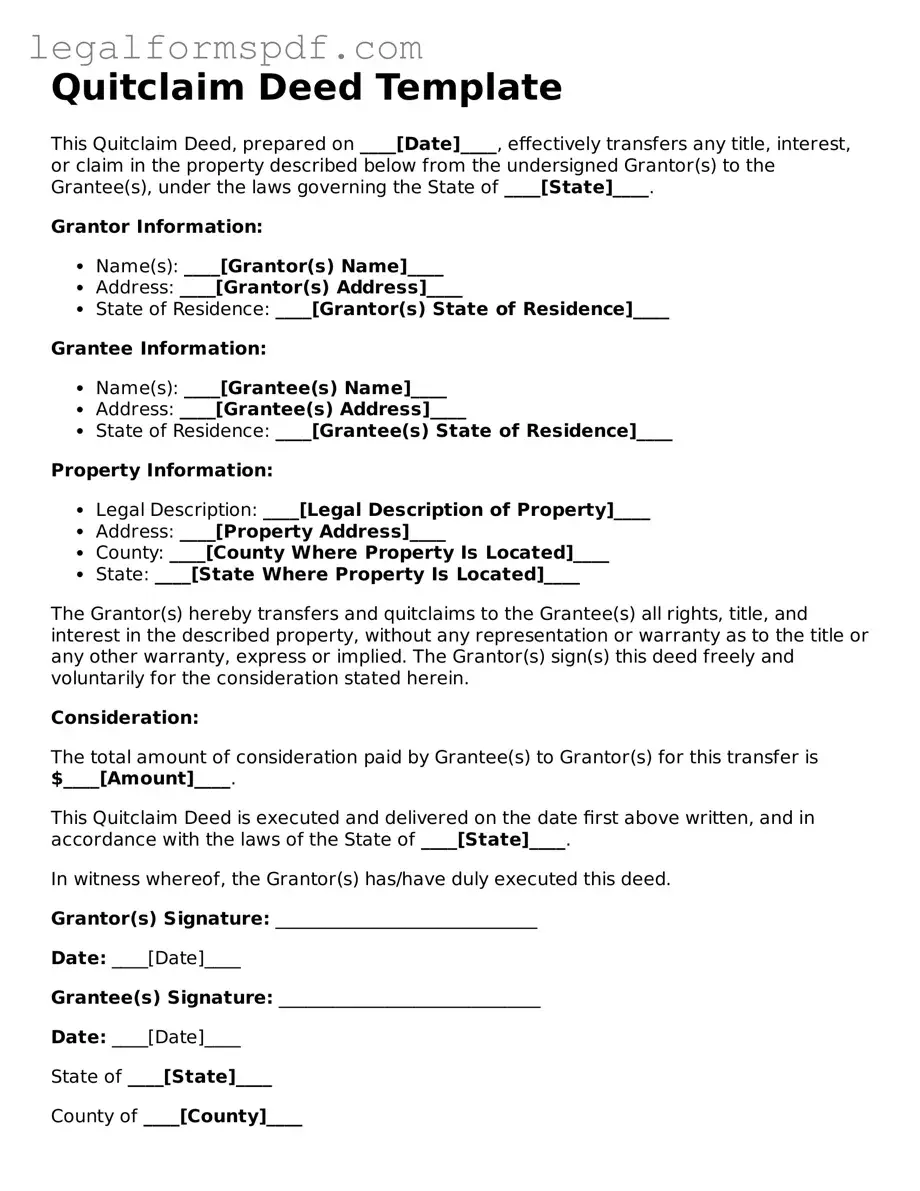What is a Quitclaim Deed?
A Quitclaim Deed is a legal document used to transfer interest, ownership, or rights in real property from one person or entity (the grantor) to another (the grantee) without any warranty. It is most commonly used between family members, during divorce proceedings, or in other informal transactions where the property’s history is well known to both parties.
When should I use a Quitclaim Deed?
A Quitclaim Deed is ideal for non-commercial property transactions where the parties know each other and want a simple transfer. Examples include transferring property between family members, adding or removing a spouse’s name from the title post-marriage or divorce, or clearing up a title issue. However, it's not recommended for sales where the buyer requires protection, as it offers no guarantees about the property's title.
Does a Quitclaim Deed mean the property is free of liens or encumbrances?
No, a Quitclaim Deed does not guarantee that the property is free of liens or encumbrances. It simply transfers the grantor’s interest in the property as-is, which means any existing financial obligations or legal issues transfer to the grantee. Prospective buyers or grantees should conduct a thorough title search to uncover any potential issues.
How is a Quitclaim Deed different from a Warranty Deed?
The main difference between a Quitclaim Deed and a Warranty Deed is the level of protection afforded to the grantee. A Warranty Deed guarantees that the grantor holds a clear title to the property, free of liens or encumbrances, and is legally authorized to sell it. Conversely, a Quitclaim Deed offers no such assurances, merely transferring whatever interest the grantor may have without warranty.
What are the necessary steps to file a Quitclaim Deed?
Filing a Quitclaim Deed involves several steps: ensure the deed is correctly drafted to meet your local government’s requirements, include all necessary legal descriptions of the property, sign the deed in the presence of a notary public, and finally, file the deed with the local county clerk’s or land records office. Requirements for filing can vary by location, so it’s advisable to consult local regulations or a professional.
Is a Quitclaim Deed effective immediately after signing?
While a Quitclaim Deed is legally effective as soon as it's signed and notarized, it's not fully enforceable against third parties until it's recorded with the appropriate governmental authority, typically the county recorder's office. Failing to record the deed can lead to complications, as the transfer might not be acknowledged in public records, affecting the grantee's rights.
Can a Quitclaim Deed transfer property to more than one person?
Yes, a Quitclaim Deed can be used to transfer property to multiple grantees. When the property is transferred to more than one person, they can hold the property in several forms, such as joint tenants or tenants in common, depending on their intentions and the laws of the state where the property is located. It’s important to specify the type of joint ownership in the deed.
Does the grantor need an attorney to create a Quitclaim Deed?
While it's not legally required to have an attorney create a Quitclaim Deed, consulting with one can be highly beneficial, especially to understand the consequences of the transfer and to ensure the deed meets all legal requirements. An attorney can provide valuable advice and help prevent potential legal issues down the road.
Are there any fees associated with filing a Quitclaim Deed?
Yes, there are usually filing fees associated with recording a Quitclaim Deed, which vary by jurisdiction. Additionally, some locations may require payment for supplemental forms or taxes at the time of filing. It’s wise to inquire about the specific fees in your area with the local county clerk's or land records office.
Can a Quitclaim Deed be revoked once it's filed?
Once a Quitclaim Deed is filed and recorded, it cannot be unilaterally revoked by the grantor. If the parties agree that the deed was made in error or wish to reverse the transaction, a new deed – typically another Quitclaim Deed in the reverse direction – would need to be executed and filed.
